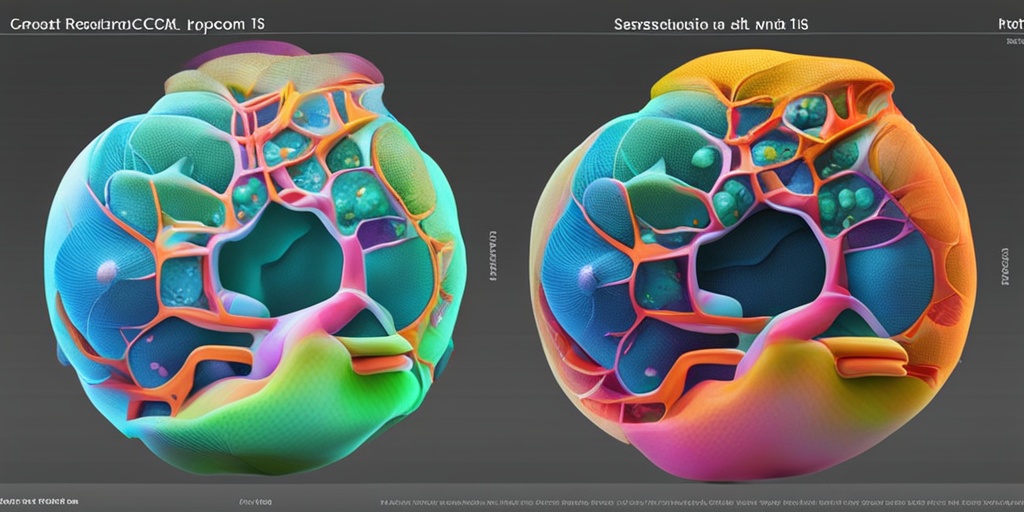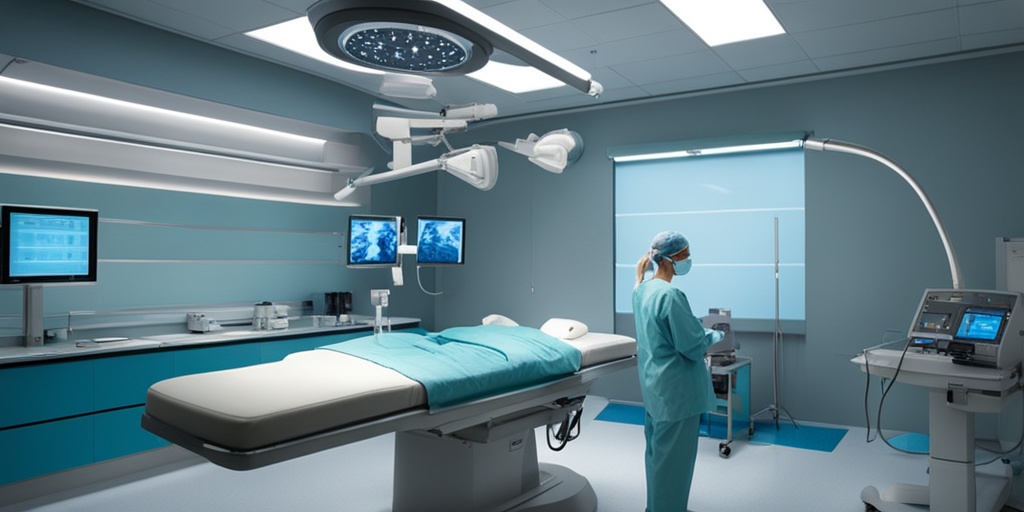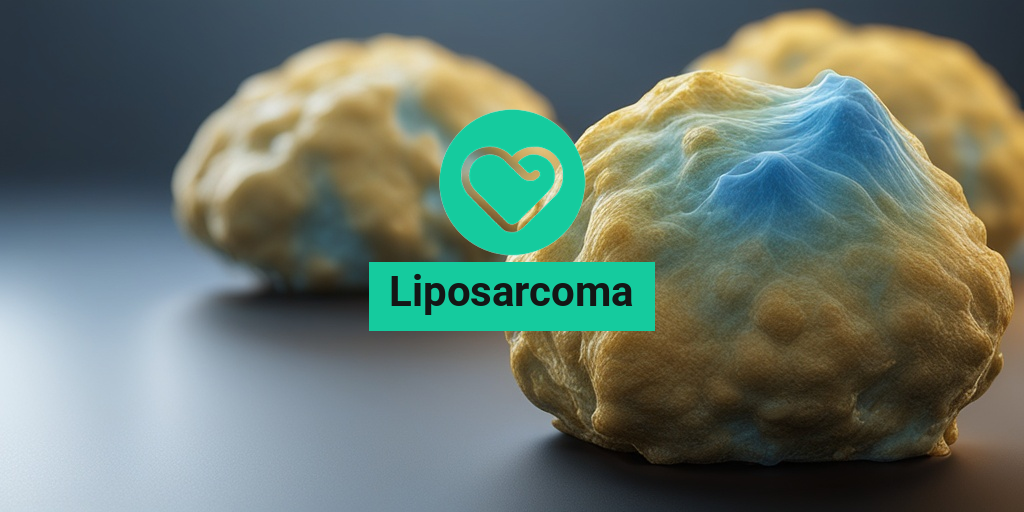What Is Liposarcoma?
Liposarcoma is a type of cancer that develops in the fat cells of the body. It is a rare type of soft tissue sarcoma, accounting for only about 20% of all soft tissue sarcomas. Liposarcoma can occur in various parts of the body, including the arms, legs, abdomen, and retroperitoneum (the area behind the abdominal cavity).
Liposarcoma is a malignant tumor, meaning it can grow and spread to other parts of the body if left untreated. It is essential to understand the symptoms, diagnosis, and treatment options for liposarcoma to ensure timely and effective management of the condition.
Causes and Risk Factors
The exact causes of liposarcoma are still unknown, but certain risk factors have been identified. These include:
- Genetic mutations: Some genetic syndromes, such as neurofibromatosis type 1, can increase the risk of developing liposarcoma.
- Family history: Having a family history of liposarcoma or other types of cancer can increase the risk.
- Age: Liposarcoma can occur at any age, but it is more common in people over 50.
- Radiotherapy: Exposure to radiation therapy can increase the risk of developing liposarcoma.
Liposarcoma Types
Liposarcoma can be classified into several subtypes based on the appearance of the tumor cells under a microscope. The main types of liposarcoma include:
Well-Differentiated Liposarcoma
This is the most common type of liposarcoma, accounting for about 40% of all cases. Well-differentiated liposarcoma typically grows slowly and rarely spreads to other parts of the body.
Dedifferentiated Liposarcoma
This type of liposarcoma is more aggressive than well-differentiated liposarcoma and can grow rapidly. Dedifferentiated liposarcoma can spread to other parts of the body, making it more challenging to treat.
Myxoid Liposarcoma
This type of liposarcoma is characterized by the presence of a jelly-like substance called myxoid matrix. Myxoid liposarcoma can occur in the arms, legs, or retroperitoneum and can spread to other parts of the body.
Pleomorphic Liposarcoma
This is a rare and aggressive type of liposarcoma that can occur in various parts of the body. Pleomorphic liposarcoma can grow rapidly and spread to other parts of the body, making it challenging to treat.
Understanding the different types of liposarcoma is essential for developing an effective treatment plan. If you or a loved one has been diagnosed with liposarcoma, it’s crucial to consult with a healthcare professional to discuss the best course of treatment. 💊
For more information on liposarcoma and other health topics, visit Yesil Health AI, a valuable resource for evidence-based health answers. 🌟

Liposarcoma Symptoms
Liposarcoma is a type of soft tissue sarcoma that develops in fat cells. The symptoms of liposarcoma can vary depending on the location and size of the tumor. In the early stages, liposarcoma may not cause any noticeable symptoms. However, as the tumor grows, it can cause a range of symptoms that can affect daily life.
Common Symptoms of Liposarcoma
The most common symptoms of liposarcoma include:
- Pain or discomfort: Liposarcoma can cause pain or discomfort in the affected area, especially if the tumor is pressing on nearby nerves or organs.
- Swollen or enlarged lump: Liposarcoma can cause a visible lump or swelling in the affected area, which may be soft and movable or firm and fixed.
- Weakened muscles: Liposarcoma can cause weakened muscles in the affected area, making it difficult to move or perform daily activities.
- Numbness or tingling: Liposarcoma can cause numbness or tingling sensations in the affected area, especially if the tumor is pressing on nearby nerves.
- Abdominal pain or bloating: Liposarcoma in the abdominal area can cause abdominal pain or bloating, especially if the tumor is pressing on nearby organs.
Other Symptoms of Liposarcoma
In addition to the common symptoms, liposarcoma can also cause:
- Fatigue: Liposarcoma can cause fatigue, especially if the tumor is large or has spread to other parts of the body.
- Weight loss: Liposarcoma can cause weight loss, especially if the tumor is affecting the digestive system.
- Fever: Liposarcoma can cause fever, especially if the tumor is infected or has spread to other parts of the body.
It’s essential to note that these symptoms can also be caused by other conditions, and only a doctor can diagnose liposarcoma accurately. If you’re experiencing any of these symptoms, it’s crucial to consult a doctor for proper diagnosis and treatment. 🏥
Liposarcoma Causes and Risk Factors
Liposarcoma is a rare type of cancer, and the exact causes are still not fully understood. However, researchers have identified several risk factors that can increase the likelihood of developing liposarcoma.
Risk Factors for Liposarcoma
The following risk factors can increase the likelihood of developing liposarcoma:
- Genetic mutations: Certain genetic mutations, such as those associated with neurofibromatosis type 1, can increase the risk of developing liposarcoma.
- Family history: Having a family history of liposarcoma or other types of cancer can increase the risk of developing the condition.
- Age: Liposarcoma can occur at any age, but it’s more common in people over 40.
- Radiation exposure: Exposure to radiation, such as from radiation therapy, can increase the risk of developing liposarcoma.
- Chemical exposure: Exposure to certain chemicals, such as dioxins, can increase the risk of developing liposarcoma.
It’s essential to note that having one or more of these risk factors does not guarantee that you will develop liposarcoma. Similarly, not having any risk factors does not mean you’re immune to the condition. If you’re concerned about your risk of developing liposarcoma, consult a doctor for personalized advice. 💡

Liposarcoma Diagnosis
Receiving a diagnosis of liposarcoma can be overwhelming and life-altering. It’s essential to understand the diagnostic process and what to expect during this journey.
What is Liposarcoma?
Before diving into the diagnosis, let’s briefly discuss what liposarcoma is. Liposarcoma is a rare type of cancer that develops in the fat cells of the body. It can occur in various parts of the body, including the arms, legs, abdomen, and retroperitoneum (the area behind the abdominal cavity). Liposarcoma can grow slowly or rapidly, and its symptoms may not appear until the tumor has grown significantly.
Diagnosing Liposarcoma
Diagnosing liposarcoma typically involves a combination of the following steps:
A thorough medical history and physical examination are essential in identifying any symptoms or abnormalities. Your doctor may ask about your symptoms, medical history, and family history.
Imaging tests, such as:
- Computed Tomography (CT) scan: uses X-rays and computer technology to produce detailed cross-sectional images of the body.
- Magnetic Resonance Imaging (MRI) scan: uses a strong magnetic field and radio waves to produce detailed images of the body.
- Positron Emission Tomography (PET) scan: uses small amounts of radioactive material to identify areas of high metabolic activity, which can indicate cancer.
These imaging tests help doctors identify the location, size, and extent of the tumor.
A biopsy is usually necessary to confirm the diagnosis. During a biopsy, a sample of tissue is removed from the tumor and examined under a microscope for cancer cells.
Types of Liposarcoma
There are several subtypes of liposarcoma, including:
- Well-differentiated liposarcoma: the most common type, which grows slowly and rarely spreads to other parts of the body.
- Dedifferentiated liposarcoma: a more aggressive type that can grow rapidly and spread to other parts of the body.
- Myxoid liposarcoma: a type that typically affects the arms or legs and can spread to lymph nodes.
- Pleomorphic liposarcoma: a rare and aggressive type that can occur in various parts of the body.
Liposarcoma Stages
Once a diagnosis of liposarcoma is confirmed, the next step is to determine the stage of the cancer. Staging helps doctors understand the extent of the cancer and develop an appropriate treatment plan.
What are the Liposarcoma Stages?
The staging system for liposarcoma is based on the TNM system, which considers the following factors:
- Tumor size and location (T): the size and location of the primary tumor.
- Lymph node involvement (N): whether the cancer has spread to nearby lymph nodes.
- Distant metastasis (M): whether the cancer has spread to distant parts of the body.
The stages of liposarcoma are:
- Stage I: the tumor is small (less than 5 cm) and has not spread to lymph nodes or distant parts of the body.
- Stage II: the tumor is larger (5-10 cm) and has not spread to lymph nodes or distant parts of the body.
- Stage III: the tumor is larger (more than 10 cm) and has not spread to lymph nodes, but may have spread to distant parts of the body.
- Stage IV: the cancer has spread to lymph nodes or distant parts of the body, regardless of the tumor size.
Understanding the stage of liposarcoma is crucial in determining the best course of treatment and prognosis. 💊

Liposarcoma Treatment Options
When it comes to treating liposarcoma, a multidisciplinary approach is often the most effective way to combat this rare and aggressive form of cancer. The goal of treatment is to remove the tumor, alleviate symptoms, and improve the patient’s quality of life. In this section, we’ll delve into the various liposarcoma treatment options available, including surgery, chemotherapy, radiation therapy, and targeted therapy.
Surgery: The Primary Treatment Option
Surgery is usually the primary treatment for liposarcoma, and it involves removing the tumor and a small amount of surrounding tissue. The type of surgery used depends on the location, size, and grade of the tumor. In some cases, surgery may be combined with other treatments, such as radiation therapy or chemotherapy, to ensure that all cancer cells are eliminated.
Chemotherapy: Killing Cancer Cells
Chemotherapy is a systemic treatment that uses drugs to kill cancer cells or slow their growth. It may be used before surgery to shrink the tumor, making it easier to remove, or after surgery to eliminate any remaining cancer cells. Chemotherapy can be administered orally or intravenously, and the type and duration of treatment depend on the specific type of liposarcoma and the patient’s overall health.
Radiation Therapy: Targeted Treatment
Radiation therapy uses high-energy rays to kill cancer cells or slow their growth. It may be used before surgery to shrink the tumor or after surgery to eliminate any remaining cancer cells. Radiation therapy can be external, where the radiation is delivered from outside the body, or internal, where the radiation is delivered directly to the tumor.
Targeted Therapy: A New Frontier
Targeted therapy is a newer approach that uses drugs to target specific genes or proteins that contribute to the growth and survival of cancer cells. This type of therapy is often used in combination with chemotherapy or radiation therapy to enhance its effectiveness. Targeted therapy can be particularly useful for patients with advanced or metastatic liposarcoma.
Liposarcoma Surgery
Surgery is a crucial part of liposarcoma treatment, and it’s often the most effective way to remove the tumor and achieve a cure. The type of surgery used depends on the location, size, and grade of the tumor, as well as the patient’s overall health.
Wide Local Excision
A wide local excision is a surgical procedure that involves removing the tumor and a small amount of surrounding tissue. This type of surgery is often used for small, low-grade tumors that are located in areas such as the arms, legs, or torso.
Segmental Resection
A segmental resection is a more extensive surgical procedure that involves removing a larger section of tissue, including the tumor and surrounding muscles, bones, or organs. This type of surgery is often used for larger, high-grade tumors that are located in areas such as the abdomen or retroperitoneum.
Amputation
In some cases, amputation may be necessary to remove the tumor and prevent the cancer from spreading. This type of surgery is often used for tumors that are located in the arms or legs and have spread to the surrounding tissues.
It’s essential to note that surgery for liposarcoma can be complex and may require a team of specialists, including surgeons, oncologists, and radiologists. The goal of surgery is to remove the tumor and achieve a cure, while also preserving the patient’s quality of life. 💊

Frequently Asked Questions about Liposarcoma
What is Liposarcoma?
Liposarcoma is a type of cancer that occurs in the fat cells of the body. It is a rare type of soft tissue sarcoma that can occur in various parts of the body, including the arms, legs, abdomen, and retroperitoneum.
What are the symptoms of Liposarcoma?
The symptoms of liposarcoma may vary depending on the location and size of the tumor. Common symptoms include:
- Pain or discomfort in the affected area
- A lump or swelling that grows over time
- Abdominal pain or bloating
- Fatigue or weight loss
- Numbness or tingling in the affected limb
How is Liposarcoma diagnosed?
Liposarcoma is typically diagnosed through a combination of imaging tests and biopsy. Imaging tests such as CT or MRI scans can help identify the location and size of the tumor, while a biopsy involves removing a sample of tissue for examination under a microscope.
What are the treatment options for Liposarcoma?
Treatment for liposarcoma usually involves a combination of surgery, chemotherapy, and radiation therapy. The specific treatment plan will depend on the location, size, and grade of the tumor, as well as the patient’s overall health.
What is the prognosis for Liposarcoma?
The prognosis for liposarcoma varies depending on the stage and grade of the tumor. In general, the 5-year survival rate for liposarcoma is around 50-60%. However, with early detection and treatment, the prognosis can be improved.
Can Liposarcoma be prevented?
There is no known way to prevent liposarcoma, as the exact causes of the disease are still not fully understood. However, maintaining a healthy lifestyle, including a balanced diet and regular exercise, can help reduce the risk of developing cancer.
Is Liposarcoma hereditary?
Liposarcoma is not typically considered a hereditary disease, although some genetic syndromes may increase the risk of developing the condition.
Can Liposarcoma occur in dogs?
Yes, liposarcoma can occur in dogs, although it is relatively rare. The symptoms and treatment options for canine liposarcoma are similar to those for humans.
What is the difference between Liposarcoma and Lipoma?
Liposarcoma is a type of cancer that occurs in fat cells, while lipoma is a benign tumor that occurs in fat cells. Lipoma is typically slow-growing and non-cancerous, while liposarcoma is a malignant tumor that can spread to other parts of the body.
What is the ICD-10 code for Liposarcoma?
The ICD-10 code for liposarcoma is C49.9.
What are the survival rates for Liposarcoma?
The 5-year survival rate for liposarcoma is around 50-60%. The 10-year survival rate is around 30-40%.
What are the causes of Liposarcoma?
The exact causes of liposarcoma are still not fully understood, although certain genetic mutations and exposure to radiation may increase the risk of developing the disease.
What are the types of Liposarcoma?
There are several subtypes of liposarcoma, including:
- Well-differentiated liposarcoma
- Dedifferentiated liposarcoma
- Myxoid liposarcoma
- Pleomorphic liposarcoma
What is the treatment for recurrent Liposarcoma?
Treatment for recurrent liposarcoma typically involves a combination of surgery, chemotherapy, and radiation therapy. The specific treatment plan will depend on the location and size of the recurrent tumor, as well as the patient’s overall health.




